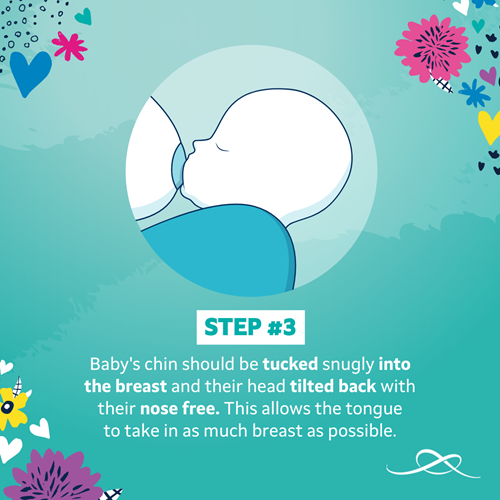We’re here to explain how to get a good latch whilst breastfeeding, and what to do if things don’t feel quite right.
If you’ve chosen to breastfeed your baby you’ve probably heard the term “latch” a hundred times already! And rightly so…ensuring your baby latches well is really important. Getting a good latch is an essential part of breastfeeding however it’s a skill that requires practice and patience. But don’t worry over time it gets easier and will become completely automatic – we promise! To help you get the hang of things as quickly as possible we’re here to explain how to get a good latch whilst breastfeeding, and what to do if things don’t feel quite right.
Ensuring your baby latches well to the breast is important for milk production. A baby who attaches well at the breast can remove milk effectively. This is vital for maintaining milk production because well-drained breasts make milk efficiently (and that means plenty of milk to satisfy your baby’s hunger…or maybe hanger?!) A good latch also prevents your nipples from becoming sore or cracked (ouch!) and ensures breastfeeding is a comfortable and a lovely experience for you and your baby.
First get comfy and ensure you position your baby in a way that they have full body contact with you (breastfeeding is the perfect time to pull your baby close to you and have lots of lovely cuddles). By being close to you, your baby will feel stable and better able to coordinate their movements.

Bring your baby to the breast, not your breast to baby! This will be much more comfortable, and your baby will have better head control this way too.

Position your baby in a way that their nose is very close to your nipple. This encourages them to tip their head back and reach forward with their lower jaw. As they tip their head back your baby’s jaw drops and their mouth opens wide, so they can anchor their chin and lower lip firmly against your breast. This helps them create a wide and deep latch which is needed for effective breastfeeding.

Make sure your baby has a big mouthful of nipple and areola! (imagine they're trying to fit a huge sandwich into their mouth). If your baby has a good mouthful of breast beyond the nipple, milk will flow freely, and breastfeeding will be comfortable. Some mums find it helpful to hold their breast when they bring baby to it, as this helps their baby to grasp onto more of the areola.

To double check your latch, you should see much more of the darker nipple skin above your baby's top lip (think of it as a moustache!) than below their bottom lip. Your baby's cheeks will also look full and rounded as they nurse.

Whilst breastfeeding shouldn’t be painful, it is totally normal for your nipples to feel a little tender in the early days whilst breastfeeding is being established. This may happen at the start of feeding when your baby first sucks. Rest assured, once a good latch is established breastfeeding should become more comfortable. If your nipples continue to feel sore it usually means the nipple needs to be further back in your baby’s mouth where it cannot be chewed or gummed. Review the steps for getting a good latch again and see if this helps.
If your nipples are sore, painful or cracked you can use a lanolin cream to help soothe them. Your breast milk also has incredible healing properties so putting a few drops directly onto your nipples will help them to heal and soothe. If you have adjusted your positioning and latch and you are still experiencing pain speak to your doctor or pharmacist, who will advise you further, and offer alternative options for relief.
You may have heard of a tongue-tie before but are unsure as to exactly what it is and how it can affect breastfeeding. Tongue-tie is where the strip of skin connecting a baby's tongue to the bottom of their mouth is shorter than usual. This can restrict the movement of the tongue.
Some babies with tongue-tie are not able to open their mouths wide enough to latch onto the breast properly. This unfortunately means that babies with tongue- tie often don’t breastfeed successfully, until the tongue-tie has been treated.
Tongue-tie is sometimes diagnosed during a baby’s first examination, but it's not always easy to see. This means that tongue-tie might not become obvious until a baby has problems feeding.
Signs that your breastfed baby may have a tongue-tie include:
Tongue-tie can sometimes also cause problems for a breastfeeding mum.
Issues can include:
If you suspect your baby has a tongue-tie, contact your doctor or paediatrician as quickly as possible to ensure your baby is getting sufficient nourishment. They will be able to assess your baby and decide whether any treatment is required.
The more you practice latching-on, the easier it will become. It often takes lots of patience to get that latch 100% right, so don’t worry if it doesn’t happen straight away. If your baby goes on the breast and you feel some discomfort or your baby doesn’t seem to be sucking properly, gently use your little finger to break the latch and try again.

Join our community at Lil-Lets talk, the place to go if you’ve got questions on pregnancy, periods or absolutely anything else!
Lil-Lets Talk